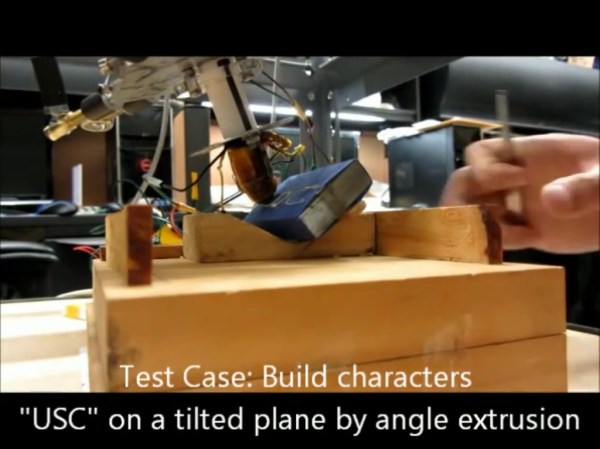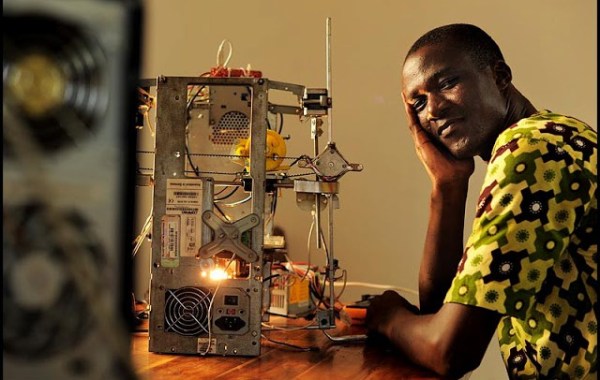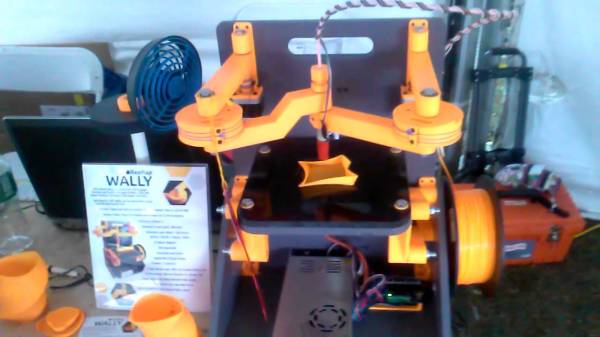We just stumbled upon this video by Professor [Yong Chen] and his students [Xuan Song] and [Yayue Pan] on a 6-axis 3D printer. The group is from the University of Southern California and their project is called the “Development of a Low-cost Parallel Kinematic Machine for Multi-direction Additive Manufacturing”.
That’s right. 6-axes of 3D printing. It uses six linear actuators to move the tool head in almost any direction. The whole thing is powered by a KFLOP board by Dynomotion, a company dedicated to premium motion control for CNC manufacturing and robotics and automation.
In the video they give examples of printing on angled surfaces and cylindrical surfaces — but that’s just the tip of the iceberg. With 6-axes, parts could be designed with completely different characteristics, you could build up the base of a part, and then build off of it in different angles, no more horizontal layers throughout!
Unfortunately we haven’t been able to find any published information on their research, only this video — so stick around after the break and watch it in awe!
Continue reading “6-axis 3D Printer” →





 There are many more materials deserving of being 3D printed, though: wax for lost wax castings, other foodstuffs for improbably shaped edibles, and ceramics so I can finally print a life-sized, functional version of the
There are many more materials deserving of being 3D printed, though: wax for lost wax castings, other foodstuffs for improbably shaped edibles, and ceramics so I can finally print a life-sized, functional version of the 












